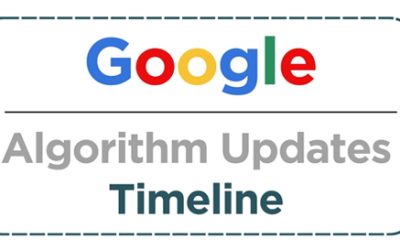A recent revision to Google’s URL structure best practices section in the Search Central documentation was published on October 14, 2024. The most recent update introduced new guidelines for URL parameter structures, simplifying the website address syntax for websites. As following the numerous Google format and algorithm updates is a demanding endeavor, you can utilize custom website development services for your company.
Key Updates for URL Format
The new guideline specifies the following recommendations for developers to implement in standard encoding methods:
- Use the equal sign (“=”) for separating key-value pairs
- Use ampersands (“&”) for connecting multiple parameters
Non-standard Format Explicitly Discouraged by Google
Google’s revised guidance also mentions discouraged practice for separating multiple key-value pairs as follows:
- Bracket and colon method –
- Example – https://example.com/category?[category:dresses][sort:price-low-to-high][sid:789]
- Single or double commas method –
- Example – https://example.com/category?category,dresses,,sort,lowtohigh,,sid,789
Why This Update Matters
Although the new instructions provided by Google do not directly affect search engine rankings, they are crucial URL parameter formatting shifts for webmasters. These clarifications enhance the crawling and indexing process for a website, affecting the site’s visibility on search results. Lack of implementation of the latest guidelines may lead to potential crawl and index issues, which hinders the search engine’s access to web pages.
Ensuring consistent URL parameter format across web pages can also help minimize SEO challenges such as duplicate content and crawl budget issues. For the e-commerce sector in particular, web address handles website functionality, modifying several aspects from product filtering to session handling. Businesses can streamline their website administration by adhering to the best URL parameter structuring practices and maintain efficient SEO strategy.
Actionable Steps for Webmasters
The previous documentation for URL parameter format was given via an old blog post titled “Faceted navigation best (and 5 of the worst) practices”. Navigating this page was complex for SEO professionals and webmasters as the guidelines were outdated with missing information. With this new update, site managers can now easily access the latest information about query strings consolidated into Search Central, under the crawling and indexing section. For SEO professionals and web developers, the actionable steps to be executed for a steady transition are as follows:
- Conduct URL audit – Run your website through a site audit tool such as Google Search Console to detect any potential query parameter errors and correct non-standard query parameter format.
- Crawl issue test – Conduct a website crawl test with tools such as web crawler to test your URLs for identifying any potential crawl ability issues and fix them.
- Carry out regular monitoring – Perform regular monitoring of your website’s address to stay up to date with Google’s policies and flag potential errors as they arise.
Looking Ahead
Google updated their information and centralized URL parameter format guidelines into the main document to provide better access for web developers and SEO professionals. While this update doesn’t directly affect the search engine results ranking, websites that don’t adopt the new guidelines could face crawl and index issues. This update is an important shift by Google towards a simplified and standardized approach of website management systems for developers and site managers. To streamline your website operation and maintenance tasks, consider outsourcing to a provider of website development services.




